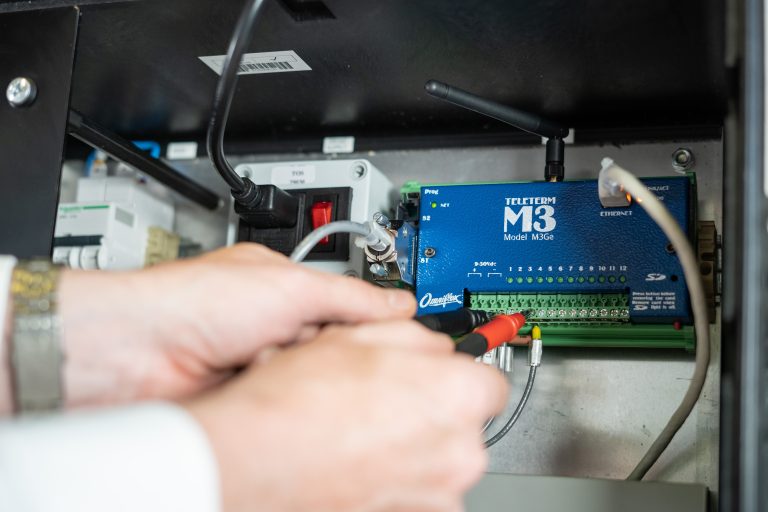Selecting the right radio frequency for telemetry applications

By Ian Loudon, International Sales and Marketing Manager at Omniflex
The UK’s radio spectrum is more cluttered than ever. Space on bands is already at a premium and, with more and more businesses setting up radio equipment, demand will only increase. For many businesses, the need to pay a fee for exclusive transmission rights means operating on a licensed band is undesirable. Instead, many opt for license-free bands that are open to everyone. As a result, they can transmit essential data while complying with legislation such as the new Radio Equipment Regulation (RER), which sets the standard for the UK’s radio communications.
Until January 2018, there were just eight frequencies for license-free radios in the UK, ranging from 446.00625MHz to 446.09375MHz. Since then, the frequency spectrum has expanded significantly. For example, the 5GHz band runs from 5150MHz to 5850MHz, before being broken down into three A-C bands. Two of the most common unlicensed bands in the UK are 2.4GHz, which is the same frequency as WiFi and Bluetooth, and 868MHz.
Higher frequencies
When selecting higher frequencies such as 2.4GHz, these will often have more ‘channels’ available than lower RFs, meaning devices can be set to avoid channels that are already occupied by other equipment. The bandwidth is also greater, and businesses can transmit more data faster than when operating on a lower frequency. For example, wireless SCADA systems typically use very high frequencies (VHF) and ultra-high frequencies (UHF) over a long range and rely on fast transmissions.
However, the higher the frequency the shorter the range, and the more vulnerable to interference. Ideally, businesses will select these bands for indoor applications where there are shorter distances between radio equipment. Walls, rain and even fog can negatively impact signal integrity, so high RFs are often unsuitable for outdoor settings.
In recent years, the 2.4GHz spectrum has become even more crowded, with more businesses taking advantage of non-exclusive access. Therefore, when installing radio equipment, there is already a considerable number of devices on the same band. The inclusion of additional items could make the band more vulnerable to interference. Consequently, more people have started using 5GHz for WiFi applications because it can carry more data and faster than 2.4GHz. Nevertheless, its narrow coverage area and lack of penetrability means its application is often confined to residential settings.
Lower frequencies
In contrast, 868MHz can transmit across longer distances and penetrate most objects. Although it requires a larger antenna than 2.4GHz, it has a range of up to 800m and a lower power consumption. While mobile phones, WiFi networks and other similar devices operate on 2.4GHz, 868MHz can support much of the radio equipment found in industrial settings, such as remote sensing, security and alarm systems.
Despite offering nonexclusive access, interferences are rare on 868MHz bands. While open to all devices, 868MHz is only really used for industrial, scientific and medical applications, meaning there’s less competition from neighbouring sites for bandwidth. However, there is a trade-off. Although lower frequencies have a larger transmission range, they also have a longer delay spread, which can result in a degraded signal due to interference. Therefore, although 868MHz and other frequencies like IEEE 802.11af can be used in outdoor environments, vegetation and weather remain problematic and multipath is introduced, increasing the delay spread further.
When choosing between higher and lower frequencies, power is an important consideration. The RER prohibits interference by preventing users from amplifying their signal to block out others, and every frequency has a different maximum permitted transmission level. Regardless of the selected frequency, the gain of the antenna cannot result in equipment exceeding the effective radiated power (ERP) permitted for that band. For instance, the maximum ERP on the 868MHz frequency for short-range and wideband devices is limited to 25dB, with a duty cycle of 10%.
Stay in touch with us on LinkedIn! 
Copyright © 2020 Omniflex (Pty) Ltd, All rights reserved. For further information, please contact us on: sales@omniflex.com or visit our website at www.omniflex.com

Comments
Display comments as Linear | Threaded